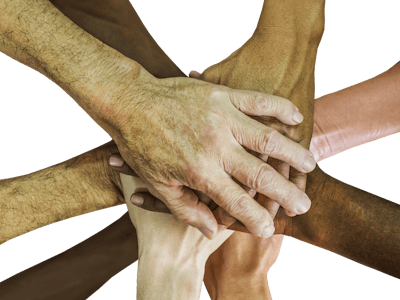
We live in an environment that is truly global in nature and this global reach is impacting all of us, whether we are on the coasts or in the center of the country, whether we are in a rural or urban setting. This is leading to increased diversity amongst all of our constituent groups — our customers, our customers’ customers, our employees and members of the communities we operate in. As we noted in our column a year ago (Manager’s Notebook – January 2016), embracing this change with a deliberate and strategic plan to diversify your business can be a win-win strategy. Embracing diversity and operating our businesses in a manner that promotes diversity and inclusion just makes good business sense. If we fail to embrace diversity, we will lose business to our competitors who embrace diversity. In this article we revisit the topic of diversity as good business. We hope to provide you with some information and tools that will help you, as a manager, further solidify and implement the diversity plan in your feed and grain business.
Diversity — a strategy that pays off
A recent study by McKinsey found that return on equity is 53% higher on average for companies ranking in the top quartile of executive board diversity while EBIT (Earnings Before Interest and Taxes) margins were 14% higher on average for this same group (see: http://www.mckinsey.com/business-functions/organization/our-insights/why-diversity-matters). The bottom line is that organizations that emphasize inclusion and diversity are more successful!
The website, “Talent Intelligence,” discusses the importance of inclusion and diversity in the workplace (see: http://www.talentintelligence.com/blog/bid/377611/Inclusion-and-the-Benefits-of-Diversity-in-the-Workplace). We subscribe to their analysis and discussion. They state that the Society for Human Resource Management (SHRM) defines diversity as “the collective mixture of differences and similarities that include, for example, individual and organizational characteristics, values, beliefs, experiences, backgrounds, preferences and behaviors.” They break down diversity even further into two categories — visible diversity traits and invisible diversity traits. “Visible traits” are often what are emphasized by organizations — and include race, gender, physical abilities, age and body type. “Invisible” diversity traits include things such as sexual orientation, religion, socio-economic status, education and parental status among other things.
Inclusion is a related but separate concept from diversity. SHRM defines inclusion as “the achievement of a work environment in which all individuals are treated fairly and respectfully, have equal access to opportunities and resources, and can contribute fully to the organization’s success.” A commitment to inclusion helps to solidify a team approach to organizational goals, and makes an organization a more desirable place to work and thus more effective and profitable.
Core concepts in diversity
Now that we have defined diversity and inclusion, we would like to explore three important concepts that are critical to understand as we work to effectively diversify our organizations. These core concepts hold whether our organization is public or private, volunteer or forprofit. The issues associated with diversity and inclusion span all aspects of our environment and lives. Research has shown that as we increase our understanding of these concepts — and their significance — we naturally move to a more diverse and inclusive environment.
Privilege
The Oxford dictionary defines privilege as: “A special right, advantage, or immunity granted or available only to a particular person or group.” In the context of discussions associated with diversity and inclusion, privilege can be thought of as those rights, benefits or advantages that the “majority” group enjoys but are not available to everyone else. We used quotation marks around the word majority for a reason — since sometimes the “majority” group is the group with the largest population. In other instances, the “majority” group may be the group that is traditionally believed to be the dominant group. The important thing to note here is that the “majority” or dominant group enjoys privilege and associated opportunities that the rest of the people don’t have.
The concept of privilege is more complicated than one would first think. It is a relative concept and depends upon the environment. While often a conversation around privilege focuses on race and gender, other important factors associated with privilege can include: age, veteran status, disability status, parental status, sexual orientation, gender identity and more. Note that some of these categories could be associated with the visible traits and some with the invisible traits, noted previously in the definition of diversity. Thus, while white males are often identified as those in the position of privilege, the idea here is much more complex. A white, heterosexual woman who is a single parent enjoys being part of the privileged group with respect to race and sexual orientation, but part of a less privileged group as a single parent. It is also important to point out that whether someone is part of the privileged group or not depends on the environment.
Two key things about privilege are to first be aware and second to act, as much as possible, so as to alleviate the impact of privilege. To achieve the first part the main thing you can do is to pay attention and ask yourself “who are in the position of privilege here?” Once you have answered your first question, then think about ways that you can counteract the natural tendencies of individuals and groups when privilege exists — and that is for those in the position of privilege to receive preferential conditions.
Specific things you can do include paying attention in meetings and inviting those who are in the “marginal” groups to speak. Also, watch when these individuals do speak and be sure ideas that are generated from them are credited to them. A common complaint from women and minorities is that they will clearly state an excellent idea during a meeting, and a few minutes later someone from the privileged group repeats the idea and gets all of the credit for it. Another direct action item you can undertake is evaluating the salaries of your workers with the idea of privilege in mind — many organizations have been amazed at the opportunities for correcting inequities.
Implicit bias
As the words suggest, implicit bias results from subtle cognitive processes. This is in contrast to explicit bias, which is associated with actions that result from conscious decisions. Everyone engages in implicit bias! Yes, we may not want to admit it, but we are all biased. Extensive research confirms this. In those environments where women are not part of the privileged group, their performance is often rated lower than that of men — and the interesting thing is that BOTH men and women rate the women’s performance lower. This phenomena holds true for other privileged categories as well.
A key point here is that most of the time we are unaware of our biases. Thus, our actions are having a negative effect on those who are not in the privileged group and we are not aware of it and certainly didn’t intend it. So — what is the answer?
Let’s start with the premise that most of the population is made up of good people who want to be fair and supportive. Then the answer is to be aware and analyze situations. Take a second look at decisions which are being made and ask yourself whether implicit bias could be playing a role. When appropriate, revisit decisions and perhaps make necessary changes or corrections. The good news here is that humans are very adaptable and when they are in an environment that is asking these questions in a positive manner the environment will improve to be more inclusive.
Microaggression
Wikipedia credits the origin of the term microaggression to Chester Pierce (psychiatrist and Harvard University professor) in 1970 to “describe insults and dismissals he regularly witnessed nonblack Americans inflict on African Americans.” The use of the term has been extended to include similar aggressions toward individuals in other groups (women, those with disabilities, religions, etc.). Wikipedia further notes that microaggressions are “rooted in racism, sexism, or discrimination based on nationality or sexual orientation.”
Two things are critical as we explore this concept of microaggressions. First, any one of the verbal insults or actions seems small and, often insignificant, when considered individually. Most often those in the marginalized group experience microaggressions not as “one-time” events but as regular occurrences. While people can handle isolated insults or negative action — repeated bombardment has negative outcomes. The individuals begin to feel under attack, undervalued and sometimes hated. In a work environment these individuals will most certainly then be less productive.
The second thing to note is that awareness and response can, once again, be extremely beneficial. As a manager, watch for the “office banter.” If there are consistent comments, rude jokes or other discussions that degrade certain individuals, this is not conducive to a healthy work environment. You can handle this in different ways — by setting a positive example yourself as well as taking action with the individuals who are engaging in inappropriate talk and actions.
Our conclusion
Enhancing diversity to create an inclusive environment in your feed and grain business can seem challenging as you get started. Keep in mind, as shown in the McKinsey report, greater diversity and a more inclusive work environment are good business management. Initially it may seem that your actions are slow to take effect. The key here is persistence.
As you embrace your diversity plan in your organization, we encourage you to (1) become aware; (2) watch and evaluate so you recognize the issues, (3) change behavior and actions (both individually for you and in your business), (4) repeat from No. 1, (5) watch for signs of improvement and celebrate short term successes and (6) continue to repeat this cycle as diversity is a process, not a single action.


















